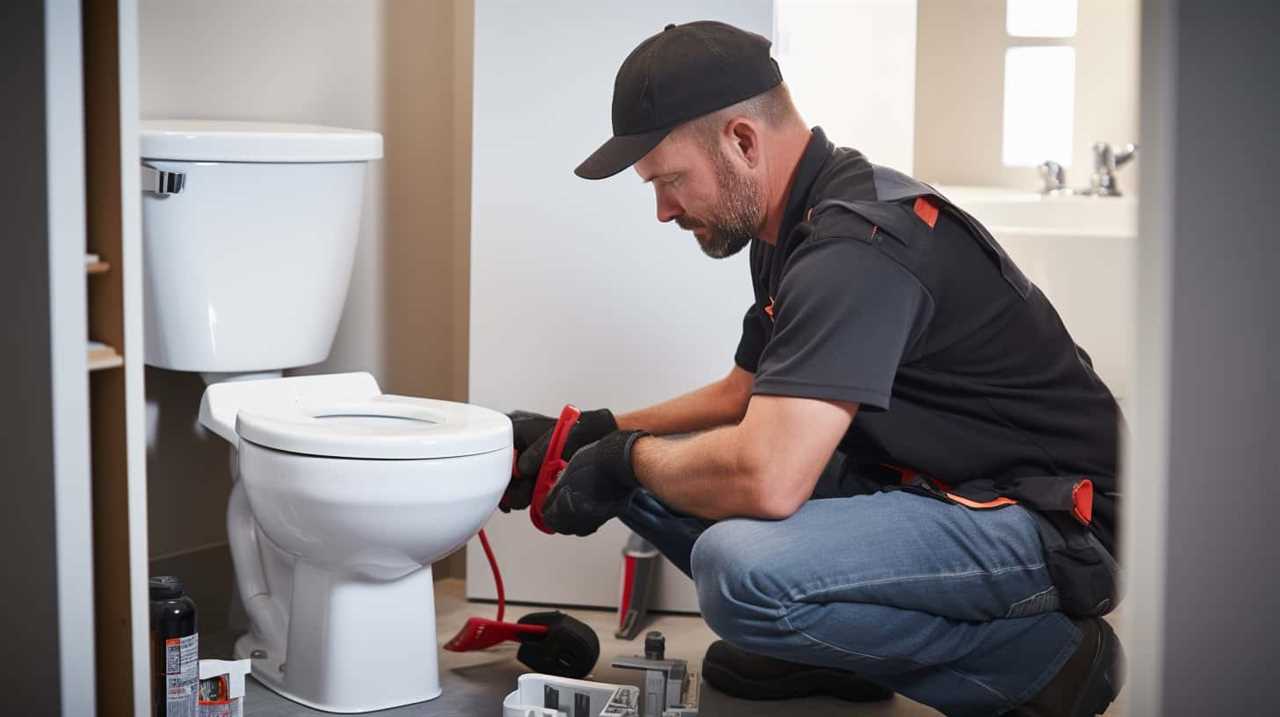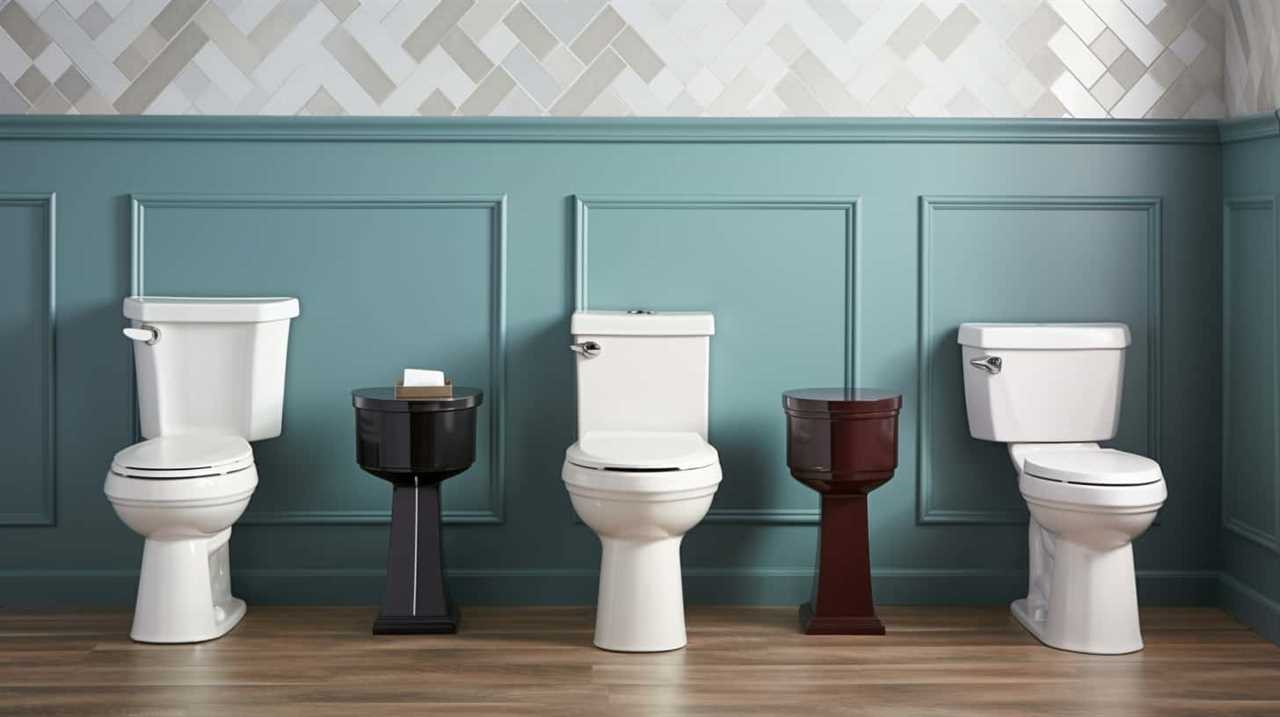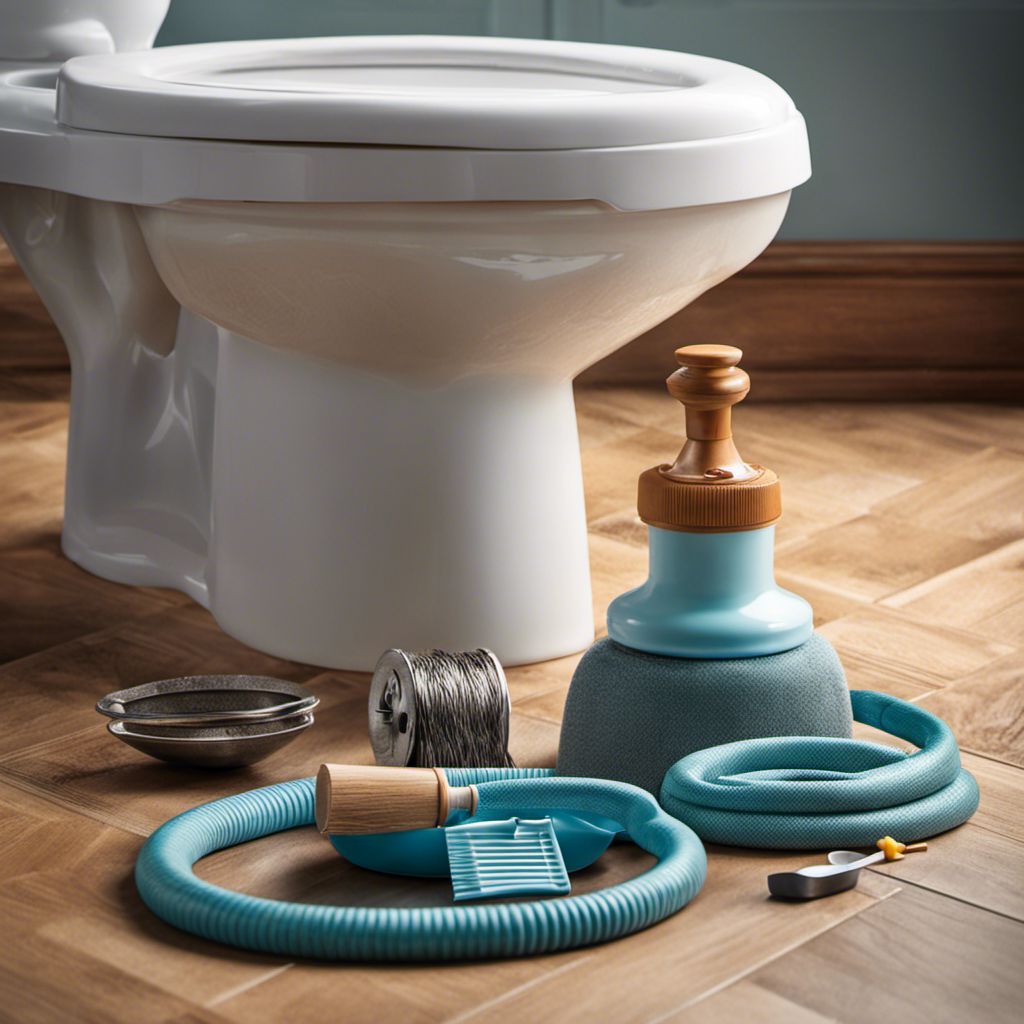Ever felt baffled by the complexities of an Indian toilet? Worry no more! We’re here to walk you through every detail of this distinctive layout.
From mastering the proper squatting technique to understanding the flushing and cleaning methods, we’ve got you covered.
And don’t worry, we’ll also share some hygiene tips and help you tackle any potential challenges.
So, buckle up and get ready to become a master of Indian toilets!

Key Takeaways
- Indian toilets offer a squatting position instead of a seated position, which aligns the rectum and prevents constipation and hemorrhoids.
- Proper squatting technique involves standing with feet shoulder-width apart, lowering the body into a deep squat position with flexed knees and buttocks close to the ground, and maintaining a balanced posture throughout.
- Flushing and cleaning methods include thorough flushing, regular cleaning with a toilet brush and mild cleaning agent, and conserving water.
- Hygiene tips for Indian toilets include using water for cleaning, practicing good hand hygiene, regularly cleaning the toilet area with a disinfectant cleaner, and disposing of waste properly.
Understanding the Indian Toilet Design
To understand the Indian toilet design, we need to familiarize ourselves with its unique features and functionality. Unlike Western toilets that have a seated position, Indian toilets offer toilet seat alternatives in the form of a squatting position. This is because squatting is believed to have numerous health benefits.
Squatting helps in aligning the rectum, making it easier to eliminate waste. It also aids in preventing constipation and hemorrhoids. Additionally, squatting promotes a more complete evacuation, reducing the risk of fecal retention.
Indian toilets are designed with a low height, allowing users to comfortably squat. They typically consist of a ceramic or concrete structure with a hole in the ground.
Understanding the design of Indian toilets is crucial to mastering the proper squatting technique, which we’ll explore in the next section.

Proper Squatting Technique
While using Indian toilets, it’s important to understand and practice the proper squatting technique. Mastering this technique not only ensures an effective and comfortable experience but also promotes better health.
Here are some key points to keep in mind:
- Maintain a balanced posture: Stand with your feet shoulder-width apart and align your body over the toilet hole.
- Squat deeply: Lower your body into a deep squat position, with your knees flexed and your buttocks close to the ground.
- Use your leg muscles: Engage your leg muscles to support your body weight and maintain stability.
- Relax and breathe: Keep your upper body relaxed and take deep breaths to aid in the process.
Flushing and Cleaning Methods
Now let’s explore how we can effectively flush and clean Indian toilets to maintain hygiene and ensure a clean environment.
Toilet maintenance is crucial for a healthy and pleasant experience. After using the toilet, make sure to flush it thoroughly using the flush handle or button. This will help remove waste and prevent any foul odors.

Additionally, it’s important to clean the toilet regularly to prevent the buildup of bacteria and germs. Use a toilet brush and a mild cleaning agent to scrub the bowl and remove any stains. Remember to conserve water while flushing and cleaning by using only the necessary amount.
By following these flushing and cleaning methods, you can ensure a clean and hygienic Indian toilet.
Moving forward, let’s discuss some hygiene tips for Indian toilets.
Hygiene Tips for Indian Toilets
What are some key hygiene tips we can follow to maintain cleanliness and sanitation in Indian toilets? Here are a few recommendations:

- Use water: Indian toilets typically don’t have toilet paper, so it’s essential to use water for cleaning. Most toilets have a water bucket or a hose nearby that can be used for this purpose.
- Practice good hand hygiene: After using an Indian toilet, make sure to wash your hands thoroughly with soap and water. This will help prevent the spread of germs and maintain cleanliness.
- Keep the toilet area clean: It’s important to regularly clean the toilet area to prevent the accumulation of dirt and bacteria. Use a disinfectant cleaner and scrub the toilet bowl, seat, and surrounding areas.
- Dispose of waste properly: After using an Indian toilet, make sure to dispose of waste in the designated bin or sewage system. This will help maintain cleanliness and prevent any unpleasant odors. Remember to follow local waste disposal guidelines for proper disposal.
Dealing With Potential Challenges
To tackle potential challenges, we can address common issues that arise when using Indian toilets. One challenge is the lack of toilet paper, which is not commonly provided in Indian bathrooms. However, there are alternatives that can be used, such as a small water bucket or a bidet spray. These can be used to clean oneself after using the toilet. Another challenge is dealing with odors, as Indian toilets do not always have a strong flushing system. To combat this, some people carry a small bottle of room freshener or scented spray to mask any unpleasant smells. Additionally, it is important to maintain good hygiene practices, such as washing hands thoroughly after using the toilet, to minimize the risk of spreading germs and odors.
| Challenge | Solution |
|---|---|
| Lack of toilet paper | Use a small water bucket or bidet spray |
| Dealing with odors | Carry room freshener or scented spray |
Frequently Asked Questions
Can I Use Toilet Paper in an Indian Toilet?
Yes, we can use toilet paper in Indian toilets, but it’s not the most common practice. Many people opt for water-based alternatives like bidets or hand-held sprayers. Proper cleaning techniques are important for maintaining hygiene.
Are There Any Specific Rules or Etiquette to Follow While Using an Indian Toilet?
When using an Indian toilet, it’s important to follow certain rules and etiquette. Proper posture is crucial for hygiene and comfort. Let us guide you through the dos and don’ts of using an Indian toilet.
What Should I Do if There Is No Water Available for Flushing in an Indian Toilet?
If there’s no water for flushing in an Indian toilet, we can use alternative methods like using a bucket of water or a jug to manually flush. Hygiene tips include washing hands thoroughly with soap after.

Are There Any Health Risks Associated With Using Indian Toilets?
There are potential health risks associated with using Indian toilets, but proper toilet hygiene practices can minimize them. Regular handwashing and maintaining cleanliness in the toilet area can help prevent infections and promote overall health benefits.
How Do I Prevent Odors From Lingering in an Indian Toilet?
To prevent odors from lingering in an Indian toilet, we use effective cleaning techniques. Regularly cleaning the toilet bowl and using air fresheners can help maintain a fresh and odor-free environment.
Conclusion
So, there you have it – a crash course on how to use Indian toilets.
It may seem like a daunting task at first, but with a little practice and some hygiene tips, you’ll be a pro in no time.

Just remember to embrace the squatting position, master the art of flushing and cleaning, and don’t forget to navigate any potential challenges that may come your way.
Happy toileting, folks!










